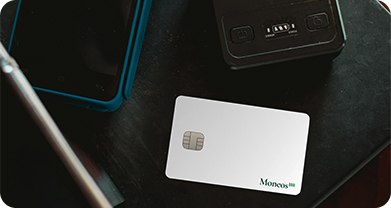Products
Find Moneos products that are tailored for you, and how they can help your business' finances.

Find Moneos products that are tailored for you, and how they can help your business' finances.

From technologies to personnel, our Solutions are tailored to make sure we have what you need for your day-to-day.


Contactless payments have become the standard method for transactions, whether by smartphones, wearable technology, digital wallets, or tappable credit and debit cards. Businesses and consumers alike are increasingly adopting these rapid, secure, and user-friendly payment options. What factors are contributing to this trend? Here’s what you should understand about the emergence of contactless payments and their advantages for your business.
One primary reason for the widespread adoption of contactless payments is their remarkable ease of use. Rather than swiping a card or inputting a PIN, customers can effortlessly tap their card or smartphone on a reader to finalise a transaction in seconds. This feature makes contactless payments especially appealing in high-traffic settings such as cafés, restaurants, retail outlets, and public transport systems, where speed and efficiency are crucial for the day-to-day.
Digital wallets like Apple Pay, Google Pay, and Samsung Pay also continue to gain traction, as consumers now enjoy a wider array of options for making swift, secure payments through checkout payment solutions. These platforms also provide added advantages, such as the capability to consolidate multiple cards and loyalty programs, enhancing the purchasing experience for users.
While convenience is a significant aspect of contactless payments, their security features are equally vital. These payments utilise encryption technology and unique one-time transaction codes for each purchase, making it challenging for fraudsters to capture card information. Furthermore, numerous payment networks implement fraud detection solutions and prevention systems that operate in the background, ensuring a secure payment process for both businesses and consumers.
One significant advantage of contactless payments is the enhanced privacy they offer. As customers are not required to swipe or insert their cards, the likelihood of card skimming—a practice where devices are used to capture card information from readers—is significantly reduced. This aspect makes contactless payments a more secure choice for both consumers and retailers.
For businesses, implementing contactless payment solutions can lead to improved customer satisfaction and faster transaction times. Shoppers appreciate the quick and convenient payment process, which can help minimise wait times, and foster customer loyalty.
In addition, adopting contactless payments enables businesses to remain competitive in a progressively cashless environment. With 80% of transactions projected to be cashless by 2030, it is crucial for businesses to provide a variety of payment methods that align with customer preferences.
The growth of contactless payments remains strong. As technological advancements continue, we can anticipate a broader acceptance of these processes, with an increasing number of businesses integrating contactless options. Soon, we may witness further innovations in wearable and even surgical technology, such as rings and implants, enhancing the convenience and accessibility of payments.
The reach of contactless payments continues to extend into new industries, including e-commerce, where a simple tap may soon replace other payment methods. With global trends favouring more secure, rapid, and efficient payment solutions, the outlook for contactless payments is exceptionally promising going into the second half of the 2020s.
